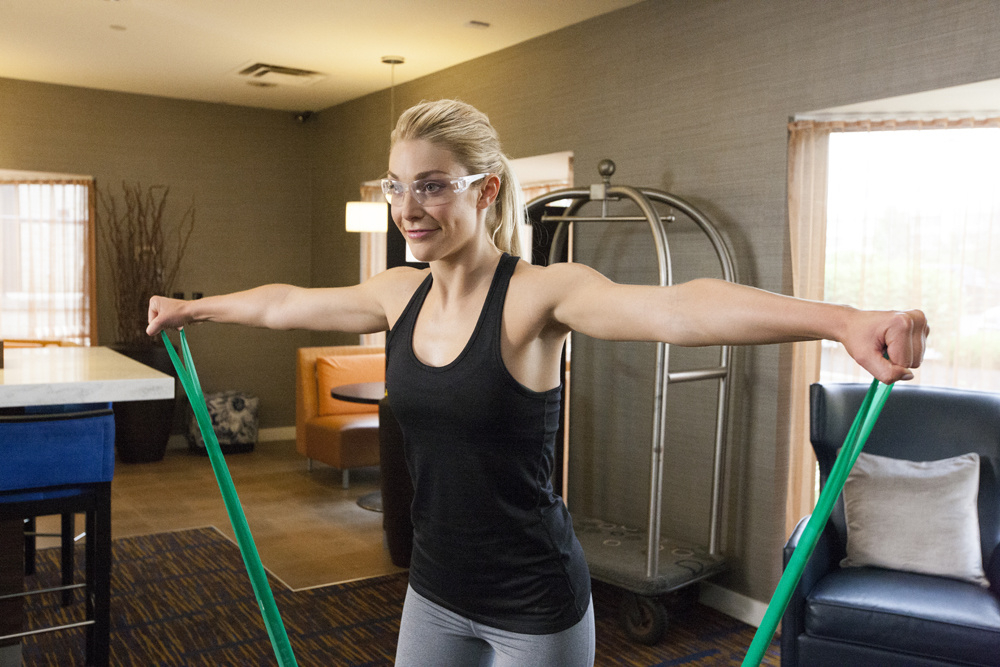

Power Doppler scanning was repeated at 6 weeks in the immobilization position assigned to the patient (abduction or adduction). On postoperative day 1, power Doppler scanning was performed on the index shoulder in adduction and 30° of abduction in each patient the allocated treatment (abduction brace or arm pouch) was then applied. Patients were randomly allocated to undergo application of either an abduction brace (group 1) or an arm pouch (group 2). This study included 42 eligible patients aged between 40 and 70 years with clinically diagnosed and radiologically confirmed rotator cuff tears undergoing arthroscopic rotator cuff repair. American Society of Shoulder and Elbow Therapists.
 International Congress of Shoulder and Elbow Surgery. Shoulder and Elbow Society of Australia. South African Shoulder and Elbow Surgeons. European Society for Surgery of the Shoulder and Elbow. The transverse part draws scapula medially, while the ascending parts draws it inferomedially. The descending part draws scapula superomedially, extends and laterally flexes the The trapezius functions are also part-specific. The muscle is innervated by the branches of the spinal accessory nerve (CN XI) and the anterior rami of spinal nerves C3-C4 via the cervical plexus. The ascending part originates from the spinous processes of vertebrae T5-T12 (or T2-T12), and inserts to the medial end of spine of scapula. The transverse part originates from the broad aponeurosis at spinous processes of vertebrae T1-T4 (or C7-T3), while it inserts to the medial aspect of the acromion and to the superior crest of spine of scapula. It inserts to the lateral third of clavicle. The descending part originates at the medial third of the superior nuchal line, external occipital protuberance, spinous processes of cervical vertebrae or nuchal ligament. Same as in serratus anterior, the parts have different origins and insertions. It has three parts descending, transverse and ascending. The trapezius muscle is a large muscle that defines the nuchal region. Intrinsic muscles: Deltoid, teres major, rotator cuff muscles ( supraspinatus, infraspinatus, teres minor, subscapularis) Muscles of the shoulder are a group of muscles surrounding the shoulder joint, which move and provide support to the said joint.Īnterior axio-appendicular muscles: Pectoralis major, pectoralis minor, subclavius and serratus anteriorĮxtrinsic muscles: Trapezius, latissimus dorsi, levator scapulae, rhomboid major, rhomboid minor Muscles of the shoulder Definition and function
International Congress of Shoulder and Elbow Surgery. Shoulder and Elbow Society of Australia. South African Shoulder and Elbow Surgeons. European Society for Surgery of the Shoulder and Elbow. The transverse part draws scapula medially, while the ascending parts draws it inferomedially. The descending part draws scapula superomedially, extends and laterally flexes the The trapezius functions are also part-specific. The muscle is innervated by the branches of the spinal accessory nerve (CN XI) and the anterior rami of spinal nerves C3-C4 via the cervical plexus. The ascending part originates from the spinous processes of vertebrae T5-T12 (or T2-T12), and inserts to the medial end of spine of scapula. The transverse part originates from the broad aponeurosis at spinous processes of vertebrae T1-T4 (or C7-T3), while it inserts to the medial aspect of the acromion and to the superior crest of spine of scapula. It inserts to the lateral third of clavicle. The descending part originates at the medial third of the superior nuchal line, external occipital protuberance, spinous processes of cervical vertebrae or nuchal ligament. Same as in serratus anterior, the parts have different origins and insertions. It has three parts descending, transverse and ascending. The trapezius muscle is a large muscle that defines the nuchal region. Intrinsic muscles: Deltoid, teres major, rotator cuff muscles ( supraspinatus, infraspinatus, teres minor, subscapularis) Muscles of the shoulder are a group of muscles surrounding the shoulder joint, which move and provide support to the said joint.Īnterior axio-appendicular muscles: Pectoralis major, pectoralis minor, subclavius and serratus anteriorĮxtrinsic muscles: Trapezius, latissimus dorsi, levator scapulae, rhomboid major, rhomboid minor Muscles of the shoulder Definition and function 
This page will introduce you to the anatomy and function of the shoulder muscles. Posterior axio-appendicular muscles (scapulo-humeral muscles).Anterior axio-appendicular muscles (thoraco-appendicular muscles).Four of them are found on the anterior aspect of the shoulder, whereas the rest are located on the shoulder’s posterior aspect and in the back.īased on their location, the shoulder muscles are grouped into: They attach the appendicular skeleton of the upper limb to the axial skeleton of the trunk. The muscles of the shoulder support and produce the movements of the shoulder girdle.







 0 kommentar(er)
0 kommentar(er)
